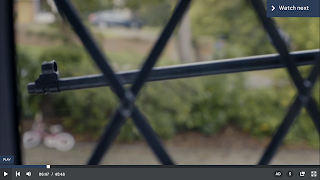Tide Advert
My first impression of this is that the advert is very sexist, aiming the product mainly at women, however in the time that it was made it played on the stereotypes and roles of women at the time.
Z-Line is used to draw the eye to the illustrations rather than the text, and these illustrations also represent that women find washing powder so significant in their lives because of how good it is. It also means that you don's have to read all the text but you can get the impression really quickly off the advert. In the main image, it could portray that a woman relies on washing powder as much as she relies on a man (a symbolic code). There is hermeneutic codes used here as the audience may wander why she is hugging the washing powder and loves it so much. There is no diversity here, every person is white and perfectly made up, and therefore this shows how you are perfect if you use tide.
A sans serif font is also used within this, and this type of font is associated with being more modern so therefore the company at the time could feel their product is revolutionary and modern for the times. Bright primary colours are used here, and primary colours are supposed to be "basic" and therefore shows how this is a basic need, as well as the fact that this would show that the product will make your life brighter and better. Red is used here and connotes to being sexual, and the way the woman loves the product is that she maybe loves it so much, but also could show how the women have the jobs that they're there for cleaning and they're there for their husbands.
The lexis here makes washing seem like a chore, for example "washday product", and shows the women doing their jobs whereas that wouldn't be seen as often nowadays. It also refers to the women as "you women", and this derogatory lexis shows how she is there to be bossed around and to be a servant. It also is as though they are talking down to the audience, where they take up a position of power. One of the ladies called it a "sudsing whizz", pointing out how she feels it is clever, and easy to use. It would seem like slang, and therefore appeals to the working class. They use hyperbole here, "new washing miracle", showing how the washing powder is apparently so amazing. The word "whitest" here is used to promote the way the soap works really well, however thinking about the context in the time it could show how "whitest" is the best.
Proairetic code is used here by using a close up of the woman, in order to show how the housewife is going to do the washing, and shows how excited she is to use the washing powder.
The ideology of the housewife is that every woman wants to be an attractive woman, and that every woman loves to clean and is there to clean. By portraying this image as a woman who wants to clean, then women will also feel that is what they want to do.
The ideology of the housewife is that every woman wants to be an attractive woman, and that every woman loves to clean and is there to clean. By portraying this image as a woman who wants to clean, then women will also feel that is what they want to do.
Even though this advert was made in the 50s, Procter and Gamble still remain the leading company to this day in America. The cartoon at the bottom shows a woman boasting about the brand in order to sell the product. DMB&B, the company who produced these adverts, would put a lot on their adverts and also put a lot on the radio, in order to familiarise the public with the company.



Comments
Post a Comment